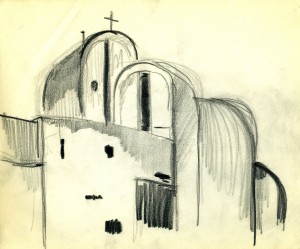Architecture, like common law, is based on precedents rather than theories. Great buildings are always, to some extent mysteries, and they must be experienced first-hand if their greatness is to be understood. That is why architects have always travelled in order to examine, measure, sketch, and photograph, in an attempt to plumb the mystery. So it would come as a surprise to most people to discover that almost all schools of architecture teach something called architectural theory. Or, at least, their curricula include courses that bear that name. Since the 1990s, these courses have by and large replaced the comprehensive study of history, which for so long formed the scholarly backbone of architectural education. Since theoretical treatises in architecture are few and far between, and the connection between them and practice is tenuous at best, courses in so-called history-theory tend to rely heavily on philosophy and cultural studies. This has little to do with the pragmatic and messy field of the building arts, as young graduates soon discover. Those who want to be architects will find that the pencil and the sketchbook are more potent tools when it comes to unraveling the secrets of the great buildings of the past.


This is so true. I teach a course at USC which involves visiting (usually for a 3 hour stint) 11 houses designed by 7 important/famous architects (Wright, Neutra, Schindler, Koenig, Lautner, Greene Brothers, Eames). I have taught the course 19 years in a row and each year I see something I never realized before. It is powerful!
This sounds like a great course. Quite a line-up.
I think the Academy has forgotten that architects design buildings. When I was in school in 90’s we actually had a studio in which a building was not our major project. We created a master plan for the strip near the campus. I have no problem with urbanism and city planning and architects need to be familiar with these topics but in the end we design buildings. Sketching and drawing great works of architecture will teach you much more than talking about them.